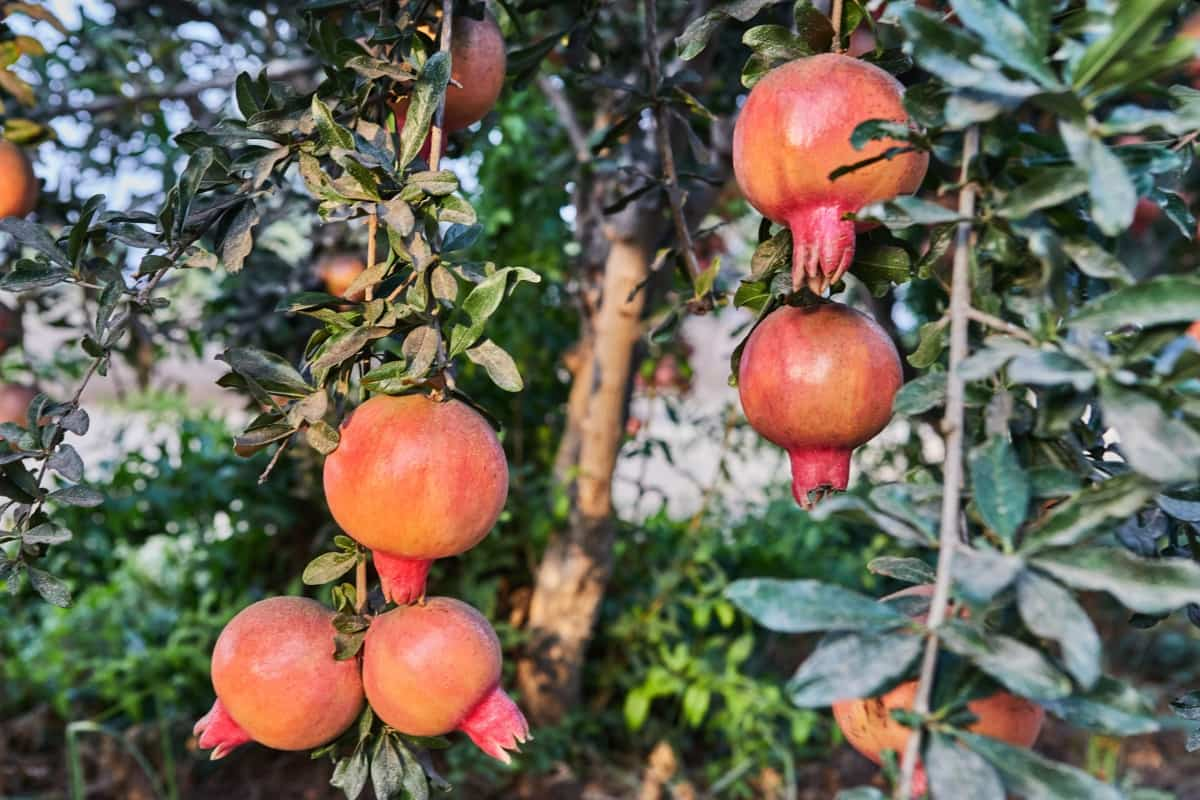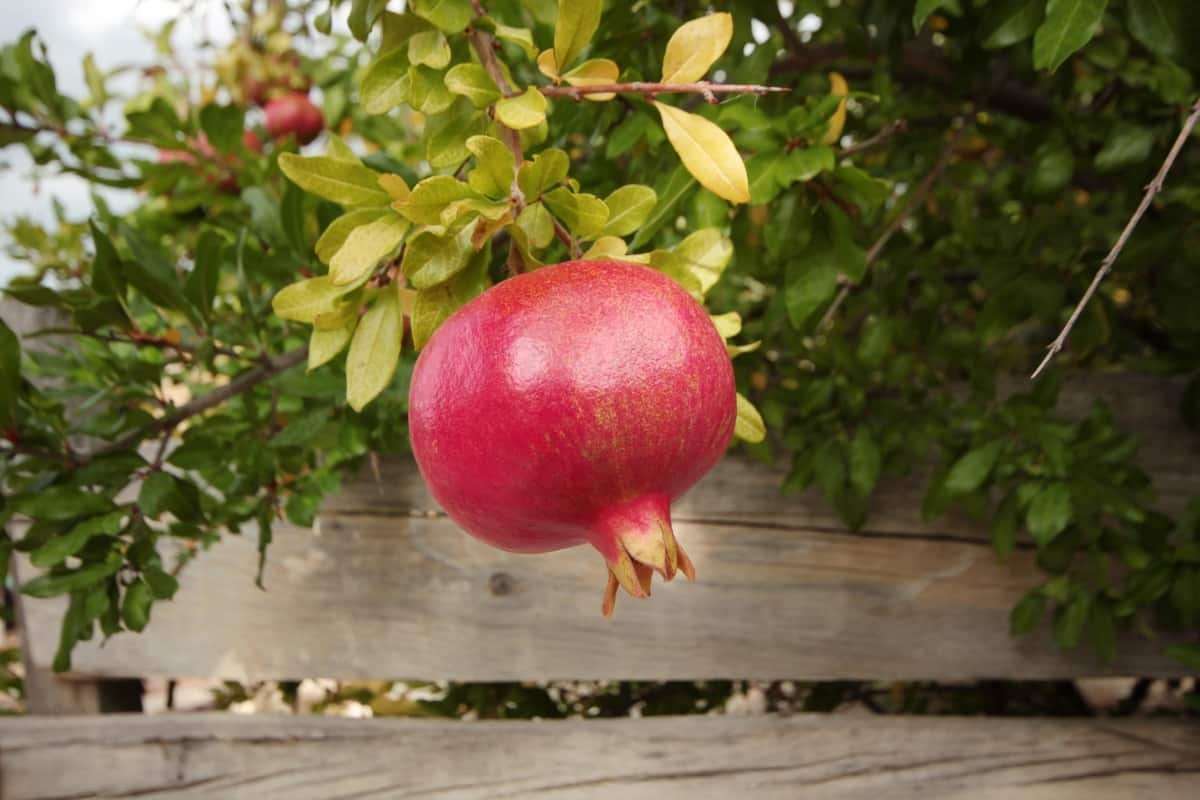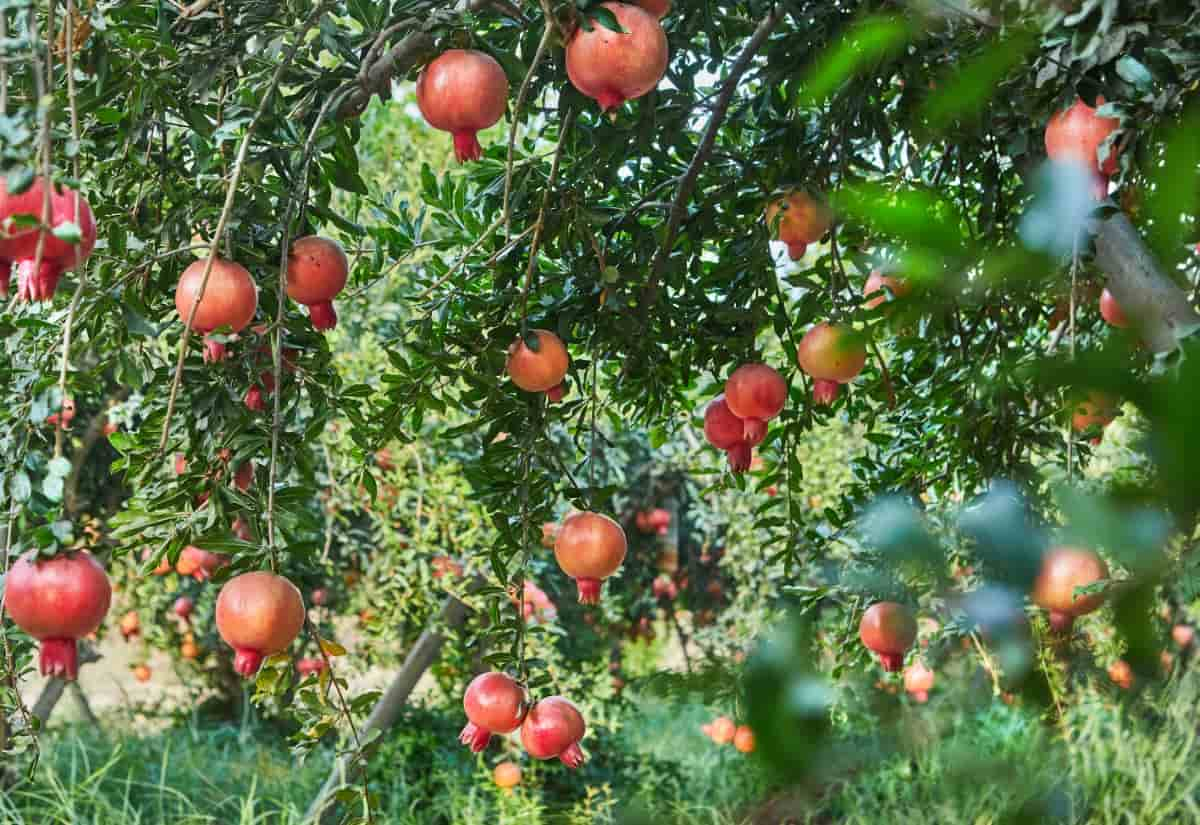Pomegranates, a staple in many cultures, are beautiful fruits packed with numerous health benefits. However, this fruit’s true essence and flavor can only be experienced when it is perfectly ripe. But how do you know when a pomegranate is ripe and ready to pick? How to tell if a pomegranate is good, or how to decipher if it’s turned bad? It all lies in understanding its various characteristics.

From the color of the seeds and the softness of their exterior to their weight and the sounds they produce, there are several signs to look out for. A ripe pomegranate should be a specific color, and while many think pomegranates ripen off the tree, it’s best to know when they’re at their peak while still hanging. Here, we learn these signs and more, ensuring you never have to wonder how to tell if a pomegranate is ripe on the tree or off it ever again.
10 Signs that Tell You If a Pomegranate is Ripe
Color
Pomegranates come in a variety of shades, but when it comes to ripeness, color is a definitive marker. A ripe pomegranate should be what color? Typically, you should look for a rich, deep, ruby red or a dark pink hue. However, remember that color can vary based on the variety of pomegranates.
Even so, any brownish or overly light patches might indicate that the fruit is either unripe or overripe. The skin should predominantly have that lush reddish tint. Moreover, what color are ripe pomegranate seeds? Once opened, ripe seeds should be a vibrant crimson, glistening with juicy freshness.
Softness
One way to determine the ripeness of many fruits, including pomegranates, is by feeling their softness. Gently press your fingers against the fruit’s surface. A ripe pomegranate will yield slightly under pressure but shouldn’t be too soft or mushy. If it feels hard as a rock, it’s not ripe yet. On the other hand, if the skin feels overly soft or has any mushy spots, the fruit might be overripe or starting to go bad. The right balance of firmness yet a little give is the sweet spot you’re looking for.
Weight
Lift the pomegranate in your hand and gauge its weight. A ripe fruit will feel heavy for its size, indicating it’s packed with juicy seeds. Even if a pomegranate looks smaller, it should have a significant weight if it’s ripe. A lightweight fruit might not have developed fully or could be lacking in juice, so always opt for the ones that feel dense and heavy.
In case you missed it: When to Prune Pomegranate Tree: Best Time, Schedule, Season, and Techniques

Ridges
A ripe pomegranate is known for its distinctive ridges. As the fruit ripens, the seeds grow, causing the skin to bulge slightly and form sections. These ridges should be prominent but not excessively pronounced. If the fruit’s surface is smooth without noticeable sections, it might still need time to ripen. However, if the ridges are too pronounced, causing the skin to look overly stretched, it might indicate that the fruit is overripe or the seeds are overly packed and starting to go bad.
Stem Color
The fruit’s attachment to the tree, its stem, also holds clues about its ripeness. How do you know when a pomegranate is ready to pick based on its stem color? A green stem indicates that the fruit is still young and needs more time. However, as the fruit ripens, the stem turns a woody brown. Once you see this brownish stem, it’s a good indicator that the fruit is ripe and ready to be picked from the tree.
Scent
A ripe pomegranate emits a subtle, sweet aroma. Hold the fruit close to your nose and take a sniff. If you can sense a mildly sweet fragrance, it indicates the fruit is ripe. However, be wary of overpowering or fermenting smells as they can indicate that the fruit is overripe or going bad. On the other hand, a lack of scent might mean the fruit still needs time to ripen.
In case you missed it: How to Pollinate Pomegranate Flowers: Hand Pollination, Natural Pollination, and Tips

Sound
Lastly, the sound of a pomegranate can be a surprising yet effective way to gauge its ripeness. Tapping a ripe pomegranate with your fingers should produce a metallic sound, almost like a light “tink.” This sound is produced because of the tightly packed, juicy seeds inside. If the sound is dull or muted, it might not be ripe yet, or it could be too ripe.
Skin Texture
The exterior of a pomegranate offers valuable insights into its ripeness. A ripe pomegranate’s skin is smooth but not overly shiny, with a tightness that indicates it’s filled with juicy seeds. As the fruit ripens, its skin becomes slightly rough, hinting at the richness inside. Conversely, if the skin is too hard, wrinkled, or shows signs of decay or damage, it may indicate that the fruit is either not ripe or past its prime. The skin’s texture is a tactile guide to the fruit’s freshness.
Juice
The juice of a pomegranate is one of its most sought-after features. When ripe, the seeds burst with a deep red, almost crimson juice that perfectly blends sweetness and tartness. The juiciness indicates the fruit’s hydration and overall health. If you press a seed and it doesn’t release a generous amount of juice, or if the juice is too pale and lacks vibrancy, the fruit may not be fully ripe or stored improperly. The juice’s color and consistency indicate the fruit’s readiness for consumption.
Separation
One of the unique aspects of a pomegranate is the natural division of its seeds into compartments. This separation becomes more pronounced as the fruit ripens. When opening a ripe pomegranate, you should see clear separations or sections filled with seeds divided by thin, white membranes.
In case you missed it: 9 Causes of Dying Pomegranate Tree and How to Fix It?

These membranes should be easy to navigate, allowing for effortless seed extraction. If the seeds are clustered together without clear separation or the membranes are too thick and dominate the inner space, it might be a sign that the fruit is not ripe or a variety with less favorable seed-to-membrane ratios. Proper separation ensures a more enjoyable and less messy eating experience.
Conclusion
Pomegranates are not just delectable fruits but also a treasure trove of health benefits. Knowing when they are ripe is crucial to enjoying them fully. So, the next time you ponder how to tell if a pomegranate is good, remember these signs and enjoy the lush, juicy, and sweet rewards that a perfectly ripe pomegranate offers.
- Feed Your Flock for Less: Top 10 Tips to Save on Chicken Feed
- Ultimate Guide to Ossabaw Island Hog: Breeding, Raising, Diet, and Care
- Hatching Answers: The Top 10 Reasons Your Chickens Aren’t Laying Eggs
- Eggs and Economics: Breaking Down the Cost of Raising Backyard Chickens
- Defend Your Greens: Proven Methods to Keep Iguanas Out of Your Garden
- Ultimate Guide to Cinnamon Queen Chicken: A Comprehensive Guide for Beginners
- Ultimate Guide to California Tan Chicken: Breeding, Raising, Diet, Egg-Production and Care
- Ultimate Guide to Marsh Daisy Chicken: Breeding, Raising, Diet, and Care
- 10 Types of Chicken Farming Businesses You Can Start for Profits